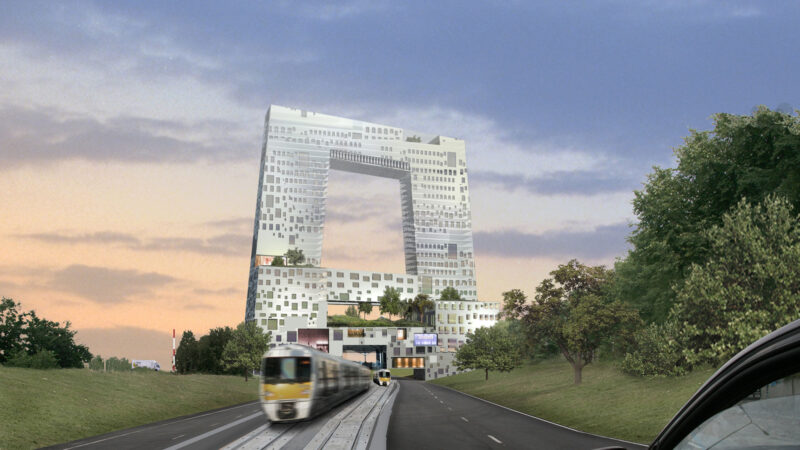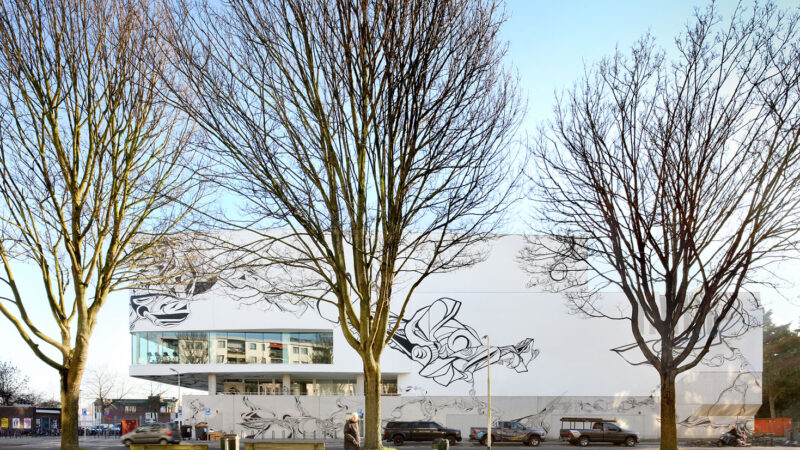
Social impulse of multimodal and public mixed use projects
Ton Venhoeven | 2012
VenhoevenCS is constantly working to improve the social cohesion in cities and urban regions. Extra attention to traffic flow in urban development projects can result in huge gains in quality of life and the use of public space. By realising public buildings with multiple societal functions, it is possible to use attractive buildings to stimulate contact and cultural exchange between people of different backgrounds.
Ton Venhoeven is a former professor of Architectural History and Theory at Eindhoven University of Technology. His 2006 inaugural speech “De capsule als knooppunt en gebeurtenis” (The capsule as node and event) deals extensively with the rise of secludedness and the social and cultural aspects of infrastructural node development and multifunctional public buildings.
Social impulse of multimodal and public mixed use projects
Never before has the world had so many city dwellers as today. According to United Nations figures, over half of the world’s population now lives in urban agglomerations. In 2025, that figure will have risen to the unimaginable percentage of 70%. This means that the urban fabric of today will grow by 40% in just fifteen years! This unprecedented march to the city is, to a large degree, economically driven: in the cities, there is more chance of finding work. Social motivations also play a part: cities have a higher level of cultural and recreational facilities, and offer increased opportunities for human contact. Cities facilitate interactions on both the economic and social levels, which makes them an attractive place of establishment for many.
"cities facilitate interactions on both the economic and social levels, which makes them an attractive place of establishment"
Accessibility
In due course, this mass migration to the city offers many advantages to all concerned, but in some cases it will also lead to frustration or ethnic and cultural tensions. To induce people to take part in the cultural life of a society, they have to be able to find a life partner in their vicinity, as well as locate affordable facilities that meet their needs. In ages past, the street in the town square with its annual market and folk festivals offered the best opportunities for doing so, but in today’s cities these places are often dominated by traffic, rules of the road, and parking spaces.
Many communities are cut off from each other by busy traffic arteries, noise barriers and unsafe passages. Obvious, safe and everyday routes between communities are vanishing by the day. The only sure way of getting around easily is by car, but for many that is too expensive, and many others are too young or too old to drive. Even for those who can drive, it then becomes a question of wanting to, although this may be more of a cultural issue.
Making actual contacts and exchange between different population groups possible means overcoming both physical and psychological barriers. One issue of accessibility is critical: pedestrian and bicycle access to individual urban areas must be drastically improved if the individual islands in the city are to be woven into a truly cohesive network by attractive routes and public spaces.
Where today motorways, industrial areas in marshalling yards frustrate the relationship between communities, redevelopment can play an important role in integrating different population groups in the city, especially when paired with the construction of good slow traffic connections, traffic-restricted public space and low threshold public facilities.
"redevelopment can play an important role in integrating different population groups in the city"
Inward expansion and infill development in existing communities can have a similar positive effect. Concentrating residential space, employment, shopping and other facilities around functions like slow traffic hubs, public transportation and car traffic can draw new residents and visitors, infusing an existing community with new strength, attraction and vitality. This infill development boosts economic activity, the foundation for a wide variety of facilities, cultural exchange and quality of life in the community.
Mixed use as social condenser
Low-threshold public facilities are an indispensable part of eliminating the psychological barriers between communities, population groups and age groups. Along with attractive public space, sports facilities, theatres, dance halls, hospitals and parks, community schools and other multifunctional buildings are ideally suited to take on a role as social condenser. Examples of this type of combination complex include schools with sports and health centres, schools with libraries and community centres, swimming pools with dance halls and fitness clubs, or even theatres with parks.
Social cohesion and the quality of the cultural life in the city benefits from integrating different public functions into affordable combination projects, to create low threshold facilities that can be used by as many different people simultaneously as possible. This brings different target groups together in unconstrained ways, because every user visits the complex with his or her own, specific goal. Local residents and other visitors are not brought face-to-face in a confrontational way, but rather incited to benefit from the many different use options. A user of the fitness facilities will coincidentally walk past the library or the museum on the way home, while a visitor to the theatre might discover the course offerings at the community centre; elsewhere, local senior citizens will gather for their weekly bingo night. Such multifunctional accommodations offer the tenants a wide variety of opportunities for dual use of space, and this keeps the facility low-threshold from a financial perspective as well.
"multifunctional accommodations offer the tenants a wide variety of opportunities for dual use of space"
The architecture of the public life
Looking back at architectural history, there are numerous examples of buildings and space that have facilitated social integration. These take many forms in many different cultures: the market hall, the shopping gallery and the kasbah, the bathhouse, the temple complex, the church, the theatre, the park and the museum. In many of these spaces, shared use of interior streets and meeting spaces offer the opportunity for social contact and cultural exchange. In many cultures, such facilities function as the equivalent of the public road and the town square, as a space for spontaneous meetings, with all around the various different functions that people claim to come for. In all examples, the typology of the buildings and the style and image of the architecture alludes to successful previous examples of such complexes across cultural differences and contrasts. With a few modernisations and adaptations for contemporary use and a multicultural public, the result is an architecture that can still be understood today.
"shared use of interior streets and meeting spaces offer the opportunity for social contact and cultural exchange"
Ton Venhoeven, 2012
All Research



